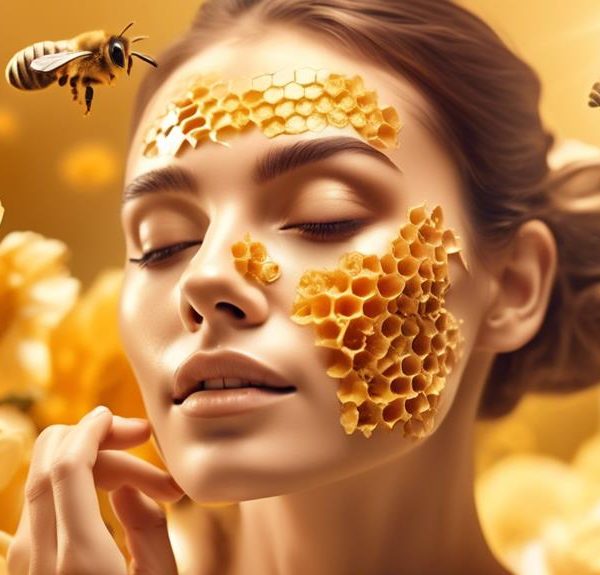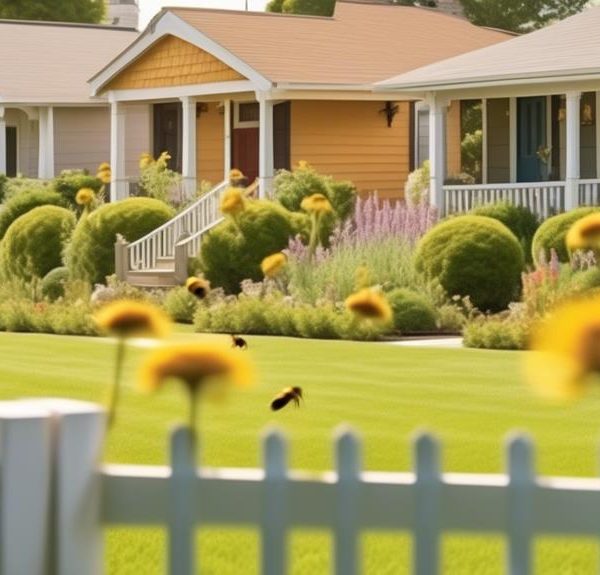Be captivated by the enchanting journey of the rare blue carpenter bees, from their unexpected origins to their distinctive habitats.
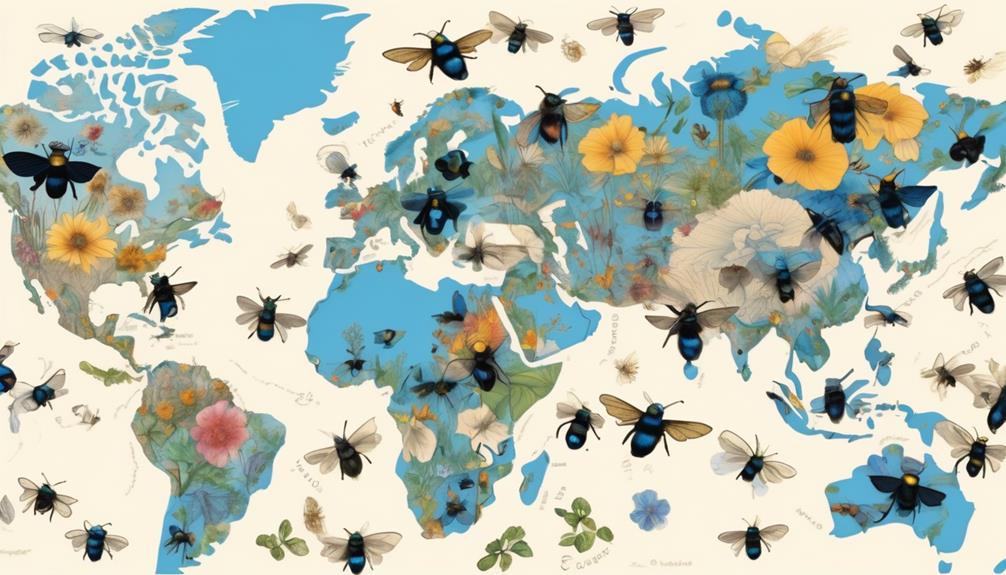
Where Are Blue Carpenter Bees From?
Did you know that blue carpenter bees, or Xylocopa violacea, make up less than 1% of the entire bee population? That's right, these captivating creatures, known for their distinctive metallic blue-purple sheen, are quite rare in the grand scheme of things.
You're probably wondering where these unique bees originate from, considering their rarity. Well, their geographic distribution and habitat preferences might surprise you. But to truly appreciate the origin and journey of the blue carpenter bee, we'll need to explore a bit further.
Key Takeaways
- Blue carpenter bees are native to Southeast Asia, with their geographic distribution ranging from India to Indonesia.
- These bees have adapted to the tropical and subtropical climates of their regions, preferring to nest in dead wood or bamboo stems.
- Blue carpenter bees are one of the largest bee species in their distribution area, measuring up to 24mm in size.
- Human activities, such as deforestation and pesticide use, pose significant threats to their habitats, making conservation efforts crucial for their survival.
Understanding Blue Carpenter Bees
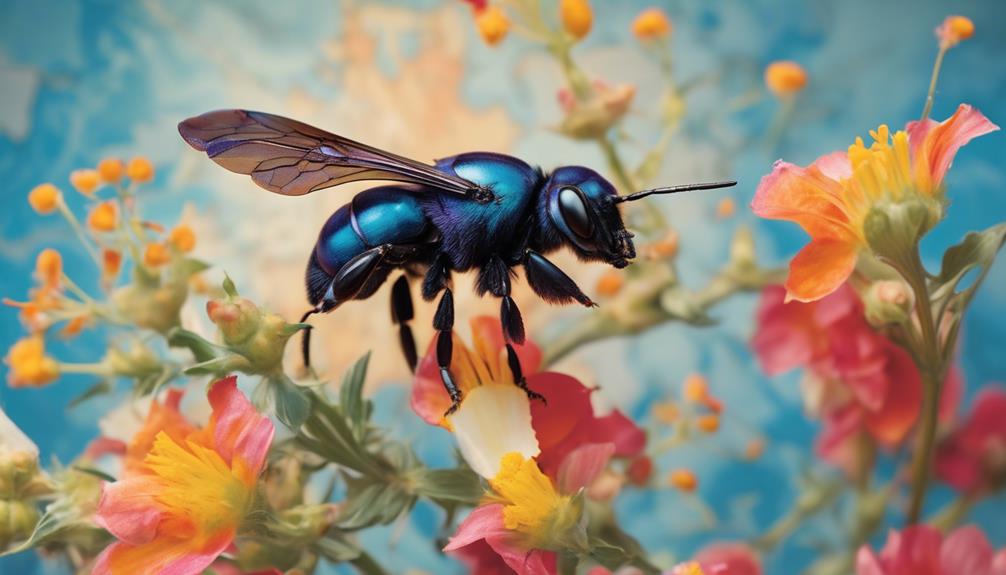
To truly grasp the nature of Blue Carpenter Bees, you'll need to delve into their unique biological features and behaviors. These bees, scientifically known as Xylocopa caerulea, are renowned for their striking blue metallic bodies, a variance from the common yellow and black bee coloring. The blue hue isn't a result of pigmentation, but a light scattering phenomenon known as Rayleigh scattering.
Blue Carpenter Bees are solitary creatures, unlike most of their social bee counterparts. Each female bee bores into dead wood or bamboo to build a nest, hence their nomenclature. They're not aggressive, but females can sting if they're threatened.
Their size is impressive, measuring up to 24mm, making them one of the largest bees in their area of distribution. Their robust size allows them to carry more pollen, thus playing a crucial role in pollination. They've a particular affinity for tubular flowers, such as morning glory, where their long tongues come into play.
Understanding the biology and lifestyle of Blue Carpenter Bees provides insights into their ecological role and the importance of their conservation. Their uniqueness in color, size, and behavior makes them a fascinating subject of study.
Origin of Blue Carpenter Bees
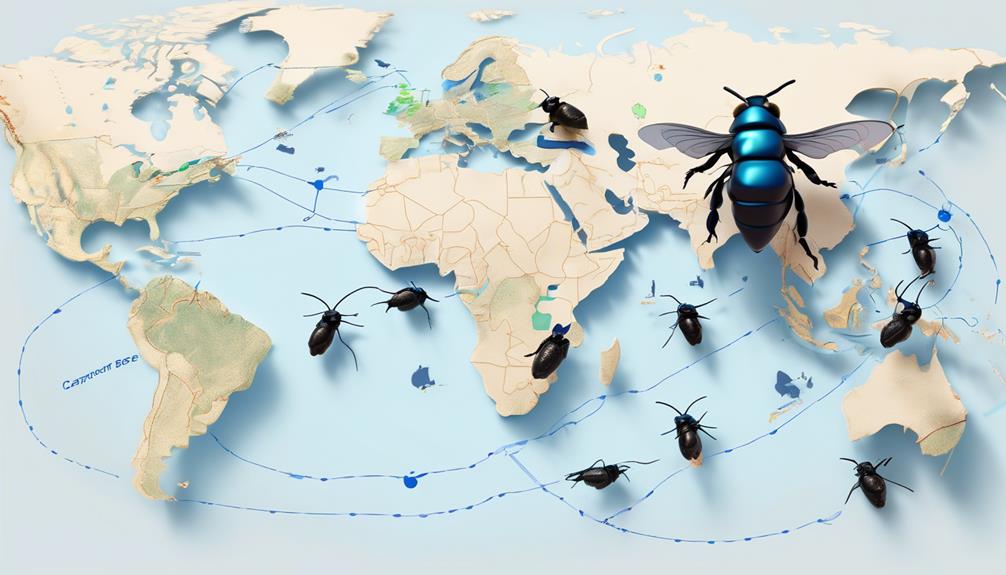
Diving into the history of Blue Carpenter Bees, you'll find that they hail primarily from Southeast Asia, with a geographical reach extending from India to Indonesia. These bees have specifically adapted to the tropical and subtropical climates of these regions.
Their unique blue coloring, a result of light scattering from their translucent exoskeleton rather than pigmentation, is a distinctive adaptation that sets them apart in the diverse world of bees. This structural coloration is particularly beneficial in hot, humid environments like Southeast Asia, where it aids in thermoregulation.
In terms of habitat, Blue Carpenter Bees have a preference for inhabiting dead wood or bamboo stems. These bees are solitary creatures, with females often carving out individual nests. However, it's not uncommon to find multiple nests in close proximity, creating a pseudo-communal living situation.
Despite their widespread presence across Southeast Asia, Blue Carpenter Bees remain understudied, largely due to their solitary nature and the remoteness of their habitats. Thus, understanding their precise origins and evolution remains a challenge. Nevertheless, their current distribution suggests that they've been successful in colonizing a diverse range of habitats across Southeast Asia.
Blue Carpenter Bees' Preferred Habitats
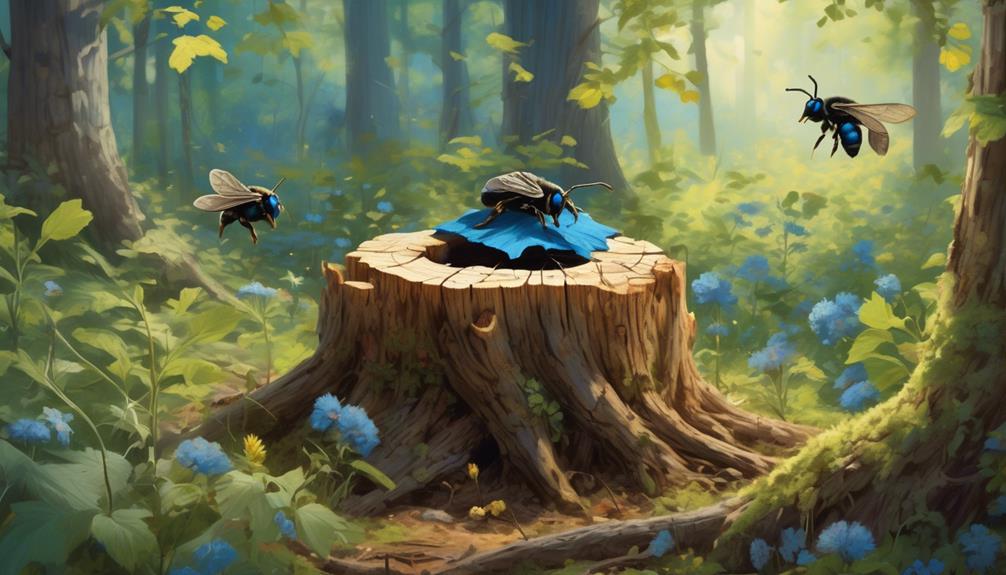
In the vast landscapes of Southeast Asia, you'll find Blue Carpenter Bees favoring the hollows of dead wood or bamboo stems as their preferred habitats. These insects exhibit a remarkable adaptation to their environment, demonstrating a penchant for exploiting existing cavities instead of investing energy in extensive excavation.
Their chosen abodes offer a secure refuge, shielding them from predators and harsh weather conditions. It's worth noting that the bees don't randomly pick their dwellings. They meticulously select sites based on specific criteria such as the wood's hardness, the hole's size, and its orientation concerning sunlight. These factors, in turn, affect the bees' breeding success, body condition, and survival rates.
The bees' preference for dead wood or bamboo stems also has ecological implications. By utilizing decaying wood, they aid in nutrient recycling, contributing to the overall health of their ecosystem. However, their habitat preference poses a challenge as deforestation and habitat degradation increasingly threaten these habitats.
Understanding the Blue Carpenter Bees' preferred habitats is crucial in devising effective conservation strategies for this species. You see, their survival is intricately linked to the preservation of their habitats.
Geographic Distribution of Blue Carpenter Bees
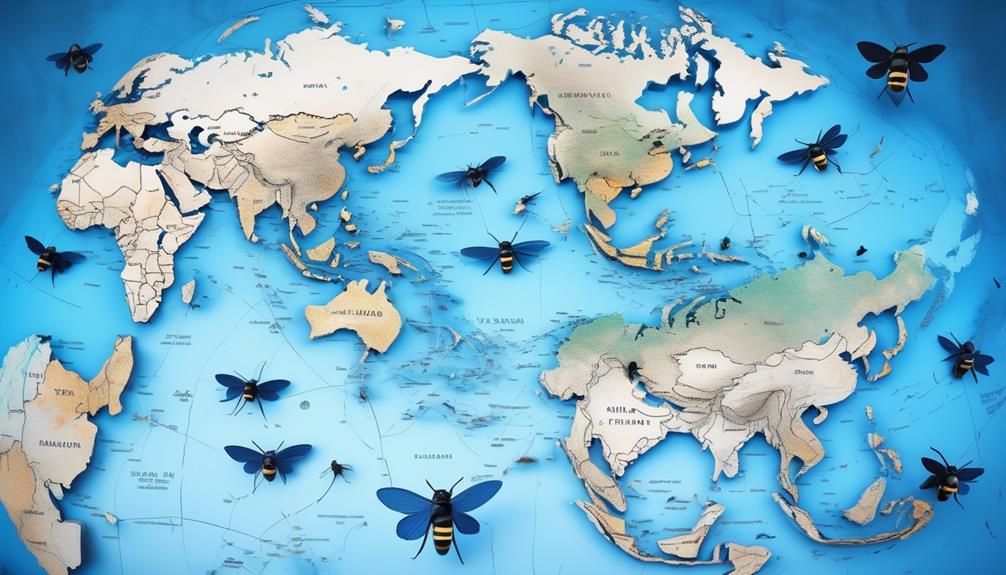
You'll find Blue Carpenter Bees dispersed across a broad geographic range, predominantly thriving in the diverse regions of Southeast Asia, where they contribute significantly to the local ecosystems. They're found from India to Malaysia, Indonesia, and even the Philippines. Their distribution isn't random; it's influenced by specific ecological factors that favor their survival and reproduction.
They're adapted to regions with ample forest cover, a variety of flowering plants, and suitable nesting sites. Blue Carpenter Bees prefer tropical and subtropical climates, where they can find abundant food resources throughout the year. They're also found in urban areas, where they exploit man-made wooden structures for nesting.
However, their distribution is threatened by rapid habitat loss due to deforestation and urbanization. These anthropogenic activities are shrinking their habitats, pushing them to the brink of local extinction in some areas. While they're not currently classified as endangered, their declining population trend is a cause for concern.
Understanding the geographic distribution of Blue Carpenter Bees is crucial for their conservation. Knowing where they thrive can help us develop strategies to protect these important pollinators and maintain the balance of our ecosystems. Let's not forget that these bees play an integral role in our environment and our lives.
Human Interaction With Blue Carpenter Bees
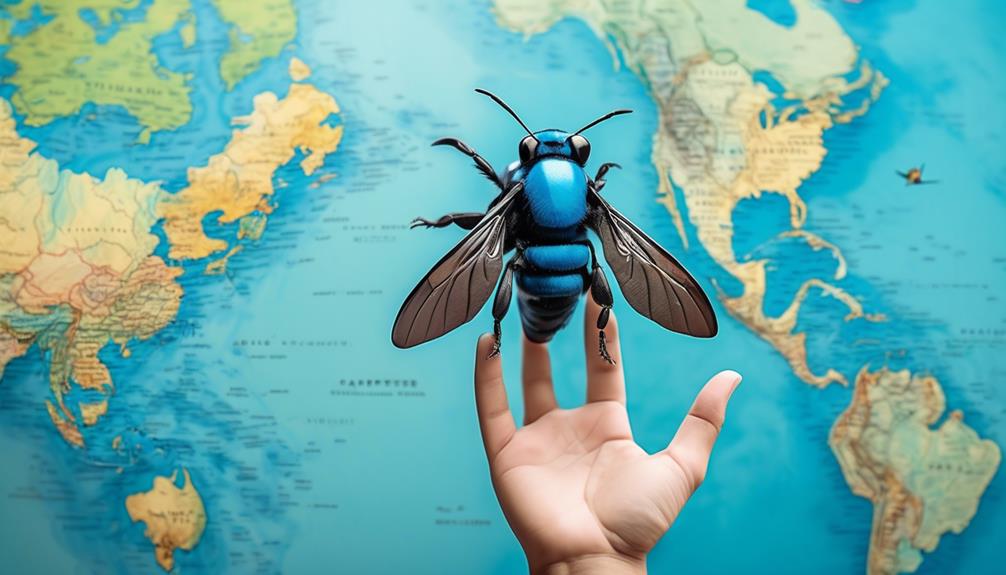
Despite their significant role in the ecosystem, our interaction with Blue Carpenter Bees is often marked by misunderstanding and fear, largely due to their imposing size and vibrant color. Yet, these bees are essentially non-aggressive, stinging only when threatened. Their primary role is pollination, and they're a crucial link in maintaining our biodiversity.
A common misconception is that these bees are destructive, owing to their nesting behavior. They burrow into dead wood or bamboo, not to wreak havoc, but to create nests for their offspring. This behavior, in fact, contributes to the decomposition process, returning nutrients to the soil.
Regrettably, human activities often lead to habitat loss for these bees. Deforestation, for instance, reduces the availability of nesting materials, thus impacting their population. Pesticide use also poses a significant threat.
You can contribute to their conservation in simple ways. Plant native flowers in your backyard to provide a food source, and leave dead trees standing to provide nesting options. Advocacy for sustainable farming practices can also reduce the threats they face.
Frequently Asked Questions
What Are the Common Predators of Blue Carpenter Bees?
You're curious about the common predators of blue carpenter bees, aren't you?
Well, these vibrant insects have several enemies. Birds, especially species like the bee-eater and shrike, are major predators.
Spiders, praying mantises, and dragonflies also capture these bees.
Then there are wasps and hornets, which invade their nests.
Even humans pose a threat, often destroying their habitats.
Predation is a real danger for these stunning creatures.
How Does Climate Change Impact the Population of Blue Carpenter Bees?
Climate change directly affects you, the blue carpenter bee. Rising temperatures and erratic weather patterns can disrupt your reproduction and foraging behaviors.
You're dependent on specific flowering plants for food, but climate change can alter their blooming times, leaving you hungry. Moreover, increased heat can harm your larvae.
Thus, climate change poses serious risks to your survival and could drastically decrease your population numbers.
What Role Do Blue Carpenter Bees Play in the Ecosystem?
Blue Carpenter Bees play an essential role in your local ecosystem. They're vital pollinators, transferring pollen from male to female flower parts. They're particularly efficient because of their size and the vibrational frequency of their flight, which shakes pollen loose more effectively.
This not only helps plants reproduce, but it also contributes to the biodiversity and overall health of the ecosystem.
How Long Is the Lifespan of a Blue Carpenter Bee?
You're curious about the lifespan of a blue carpenter bee, aren't you? Well, these fascinating creatures typically live for about one year. They're solitary bees, so after mating, the females construct nests, lay eggs, and supply food for their offspring. Once this process is completed, their lifespan typically ends.
However, their offspring will emerge the following year, continuing the cycle. It's quite an interesting life cycle, isn't it?
Is There Any Significant Difference Between the Male and Female Blue Carpenter Bees?
Yes, there's a significant difference between male and female blue carpenter bees.
You'll find females are larger and more vibrant in color, while males are smaller with less striking hues.
Interestingly, only females have the ability to sting.
Additionally, females are typically more active, carrying out most of the foraging and nest construction duties.
Conclusion
So, you've journeyed with blue carpenter bees, from their origins to their global distribution.
Native to Southeast Asia, these bees favor tropical climates and forested areas. They've coexisted with humans, albeit sometimes causing structural damage.
Understanding these striking insects is key in appreciating their role in our ecosystem. Remember, they're not just unique for their color, but also for their contribution to biodiversity.
Every creature has a story, and this is the blue carpenter bee's.

